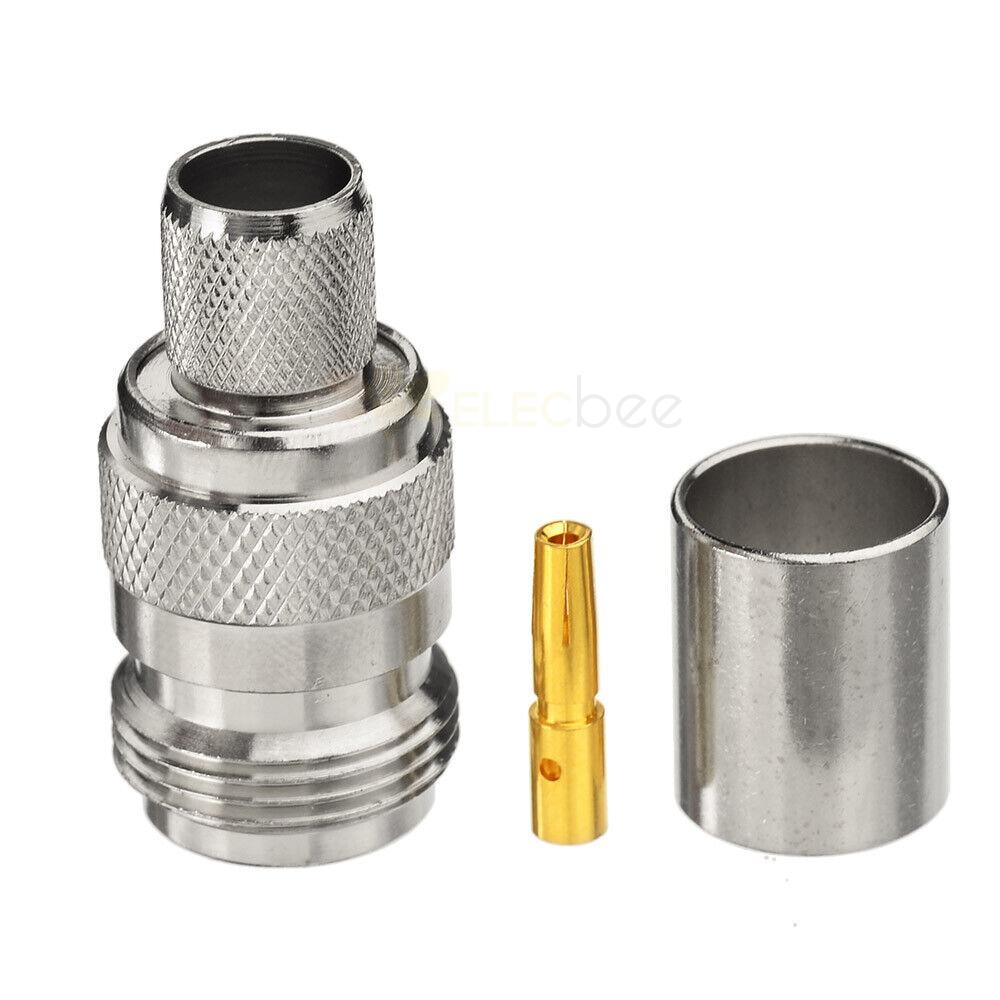Connectors are essential components in electronic systems, used to join different parts of a circuit or equipment. They come in different shapes, sizes, and types, each designed for specific applications. Two of the most popular connectors used in RF and microwave applications are the Type N and UHF connectors. However, there is often confusion about whether these two connectors are the same or not. In this article, we will explore the differences and similarities between Type N and UHF connectors.
Overview of Type N and UHF Connectors
Type N and UHF connectors are both coaxial connectors, meaning they have an inner conductor surrounded by a dielectric insulator and an outer conductor. The outer conductor is usually a metal shell that serves as a shield, preventing unwanted signals from entering or exiting the connector. Coaxial connectors are commonly used in RF and microwave applications because they offer low loss, high bandwidth, and good shielding.

Type N connectors were developed in the 1940s and were originally designed for military applications. They are named after their inventor, Paul Neill, and are sometimes referred to as Neill-Concelman connectors. Type N connectors come in two versions: 50 ohms and 75 ohms. The 50 ohm version is the most common and is used in a wide range of applications, including wireless communication, test and measurement, and broadcast.
UHF connectors, on the other hand, were developed in the 1930s and were originally used in the field of radio communications. UHF stands for "ultra high frequency," which refers to the frequency range they were designed to operate in. UHF connectors are often used in amateur radio, citizen band (CB) radio, and some commercial and industrial applications.

Physical Differences Between Type N and UHF Connectors
The most obvious difference between Type N and UHF connectors is their physical size and shape. Type N connectors are larger and bulkier than UHF connectors, with a threaded coupling that requires more torque to tighten. The typical frequency range for Type N connectors is up to 11 GHz, although some versions can operate up to 18 GHz.
UHF connectors, on the other hand, are smaller and have a bayonet coupling that is easier to connect and disconnect. The typical frequency range for UHF connectors is up to 300 MHz, although some versions can operate up to 1 GHz. UHF connectors are more prone to signal loss and interference than Type N connectors, especially at higher frequencies.
Electrical Differences Between Type N and UHF Connectors
The electrical properties of Type N and UHF connectors are also different. Type N connectors have a characteristic impedance of 50 ohms or 75 ohms, depending on the version. The characteristic impedance is the ratio of the voltage and current waves in the connector and determines the signal integrity of the system. Type N connectors have a low VSWR (voltage standing wave ratio) and are suitable for high-power applications.
UHF connectors, on the other hand, have a characteristic impedance of 50 ohms. However, their VSWR is higher than Type N connectors, especially at higher frequencies. This means that UHF connectors are less suitable for high-power applications and are more prone to signal loss and interference.
Compatibility Between Type N and UHF Connectors
Despite their physical and electrical differences, Type N and UHF connectors are sometimes used interchangeably. This is because UHF connectors have a larger center pin than Type N connectors, which allows them to fit into the larger Type N connector. However, this can cause problems with signal loss and interference, especially at higher frequencies.
In general, it is not recommended to use Type N and UHF connectors interchangeably unless there is no other option. If you must use them together, it is best to use an adapter that matches the impedance and minimizes signal loss.
Conclusion
In summary, Type N and UHF connectors are two popular coaxial connectors used in RF and microwave applications. They have different physical and electrical properties that make them suitable for different applications. Type N connectors are larger, have a threaded coupling, and are suitable for high-power applications. UHF connectors are smaller, have a bayonet coupling, and are suitable for low-power applications. Although they can sometimes be used interchangeably, it is best to use them in their intended applications or with impedance-matched adapters.

